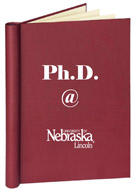Graduate Studies, UNL

Dissertations and Doctoral Documents, University of Nebraska-Lincoln, 2023–
First Advisor
Peter J. Capuano
Degree Name
Doctor of Philosophy (Ph.D.)
Department
English (Literary and Cultural Studies)
Date of this Version
Spring 2024
Document Type
Dissertation
Citation
A dissertation presented to the faculty of the Graduate College at the University of Nebraska in partial fulfillment of requirements for the degree of Doctor of Philosophy
Major: English (Literary and Cultural Studies)
Under the supervision of Professor Peter J. Capuano
Lincoln, Nebraska, May 2024
Abstract
Poised between a waning magico-theological tradition of symbolic dream interpretation and the rising influence of scientific dream theories, which equated dreaming with disorder, the dream occupied a unique space in nineteenth-century Great Britain. Dreams were coming untethered from signification, as natural philosophers deemed their content indecipherable and chaotic. Yet vestiges of early modern beliefs could still lend supernatural power and polyphony to dreams.
This was not simply a matter of making a binary choice between two ways of thinking about dreams but instead a site of collisions and coalescences. I contend that the ways in which dreams were conceptualized in nineteenth-century Great Britain made them uniquely capable of evoking affect. After mapping the historical and theoretical framework of this argument, I explore transportive dream visions in Romantic and Victorian poetry and the shifting use of revelatory dreams in Gothic novels, discussing what I term the “tandem dream sequence” in the latter. Lastly, I discuss dreamlike states and dreamy spaces in the context of a correlation that I have found between the emergence of the private bedroom in middle-class Victorian homes and Britons’ theories of dreams. If we do not take into consideration the affective potential of dreams as they were conceptualized in nineteenth-century Great Britain, we miss essential elements of the literary dreams and somnial states and spaces in nineteenth-century British literature.
Advisor: Peter J. Capuano
Recommended Citation
Nagel, Anne N., "Beyond the Looking Glass: Dreams and Somnial States and Spaces in Nineteenth-Century British Literature" (2024). Dissertations and Doctoral Documents, University of Nebraska-Lincoln, 2023–. 114.
https://digitalcommons.unl.edu/dissunl/114
Included in
Literature in English, British Isles Commons, Psychological Phenomena and Processes Commons


Comments
Copyright 2024, Anne N. Nagel. Used by permission